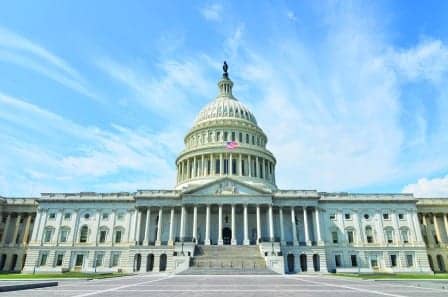Staff Standpoint | June 2017 Hearing Review
It appears that the US Food and Drug Administration (FDA) is preparing to tender some draft form of a classification for over-the-counter (OTC) hearing aids very soon—quite possibly at the June 9 National Academies’ Hearing Health Care Report Dissemination Meeting (https://goo.gl/lAL4Mt). What this new classification might look like is, of course, pure speculation. There are so many issues related to the manufacturing and distribution of an OTC hearing aid (eg, see the HIA’s position statement in the Special Report on p 42). However, here are four key items to look for:
1) Is an OTC hearing aid, indeed, a regulated medical device? This may seem a disorienting question, given that hearing aids have been regulated as Class I and Class II (low risk) medical devices for decades. However, if the Consumer Technology Association (CTA) and others had their way, the FDA would simply step out of the way and let hearing healthcare become a niche within the overall consumer electronics marketplace. This would be FDA’s nuclear option. However, it’s hard to believe this is really on the table given FDA’s own history and statements, as well as an ever-increasing body of evidence that ties hearing status to so many health factors.
2) Assuming it is a regulated device, will an OTC hearing aid need to comply with FDA Class I or Class II requirements? The April 21, 2016 FDA workshop “Streamlining Good Manufacturing Practices (GMPs) for Hearing Aids” reviewed current FDA rules on hearing aids, including the Quality System Regulations (QSRs) and whether third-party voluntary standards could replace mandatory FDA controls for a new “basic” or OTC class of hearing aid. At that workshop, those involved in hearing aid manufacturing indicated the Class I or II requirements do not impede innovation or new entrants to the market. The controls are also beneficial to consumers in ensuring companies maintain basic quality standards, as well as systems for handling complaints and returns. Others pressing for less regulation characterized them as unnecessarily expensive and restrictive.
3) What kinds of hearing losses will an OTC hearing device be able to treat? Now we’re getting into the interesting details that could ultimately define the real impact (for good or bad) of OTC hearing aids. The wording in the Warren-Grassley OTC Hearing Aid Act mentions “mild-to-moderate” losses, which could imply hearing losses up to 70 dB HL—a level many professionals believe would not avail itself to a DIY approach. There’s not much research to assess the effectiveness of an OTC device—let alone determine what kind of losses could be helped by such a device. Certainly, audibility does matter and amplification works. In last month’s Hearing Review, Larry Humes and colleagues published a summary of their important findings about a specific OTC distribution model (and placebo), and I wrote in this column about some of Elizabeth Convery and Gitte Keidser’s work at NAL (also see Dennis Van Vliet’s “Final Word” column on p 50). So, the debate becomes: what is a “reasonably safe level” and would this limit on output overly restrict/hobble the utilitarian objective of an OTC hearing aid?
4) What are the labeling requirements? Another “devil in the details” item. The FDA recently eliminated the so-called “medical waiver rule” that, since 1977, had required adults to first obtain a medical exam or to sign a medical waiver acknowledging their hearing loss could be the result of a more serious health problem. So, in addition to the “hearing aid instructional booklet” currently required for hearing aids, one would hope the labeling for OTC device would also contain: 1) Enhanced information about the medical red-flags and any potentially serious health risks associated with the device as well as non-treatment of a hearing problem; 2) Advice and options about what to do if the OTC device is not effective; and 3) Descriptions of consumers’ rights relative to trial periods, complaints, returns, etc. On the marketing side, we’ve already see ads for PSAPs that discourage consumers from seeking “expensive professional help.” With OTC, one can only imagine the outpouring of marketing that seeks to turn the public away from quality professional care.
The Special Report that outlines the Hearing Industries Association’s views on these and more issues can be found on p 42. If you are like me, you may disagree with some points, but their position statement is an exceptional outline of the most important issues in the OTC controversy.
Citation for this article: Strom KE. It should be an interesting month! Hearing Review. 2017;24(6):6.






